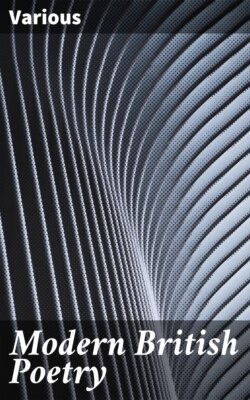Читать книгу Modern British Poetry - Various - Страница 10
На сайте Литреса книга снята с продажи.
john masefield
ОглавлениеTable of Contents
All art is a twofold revivifying—a recreation of subject and a reanimating of form. And poetry becomes perennially "new" by returning to the old—with a different consciousness, a greater awareness. In 1911, when art was again searching for novelty, John Masefield created something startling and new by going back to 1385 and The Canterbury Pilgrims. Employing both the Chaucerian model and a form similar to the practically forgotten Byronic stanza, Masefield wrote in rapid succession, The Everlasting Mercy (1911), The Widow in the Bye Street (1912), Dauber (1912), The Daffodil Fields (1913)—four astonishing rhymed narratives and four of the most remarkable poems of our generation. Expressive of every rugged phase of life, these poems, uniting old and new manners, responded to Synge's proclamation that "the strong things of life are needed in poetry also … and it may almost be said that before verse can be human again it must be brutal."
Masefield brought back to poetry that mixture of beauty and brutality which is its most human and enduring quality. He brought back that rich and almost vulgar vividness which is the very life-blood of Chaucer, of Shakespeare, of Burns, of Villon, of Heine—and of all those who were not only great artists but great humanists. As a purely descriptive poet, he can take his place with the masters of sea and landscape. As an imaginative realist, he showed those who were stumbling from one wild eccentricity to another to thrill them, that they themselves were wilder, stranger, far more thrilling than anything in the world—or out of it. Few things in contemporary poetry are as powerful as the regeneration of Saul Kane (in The Everlasting Mercy) or the story of Dauber, the tale of a tragic sea-voyage and a dreaming youth who wanted to be a painter. The vigorous description of rounding Cape Horn in the latter poem is superbly done, a masterpiece in itself. Masefield's later volumes are quieter in tone, more measured in technique; there is an almost religious ring to many of his Shakespearian sonnets. But the swinging surge is there, a passionate strength that leaps through all his work from Salt Water Ballads (1902) to Reynard the Fox (1919).
